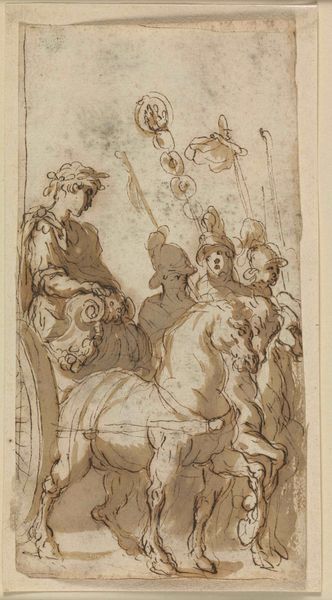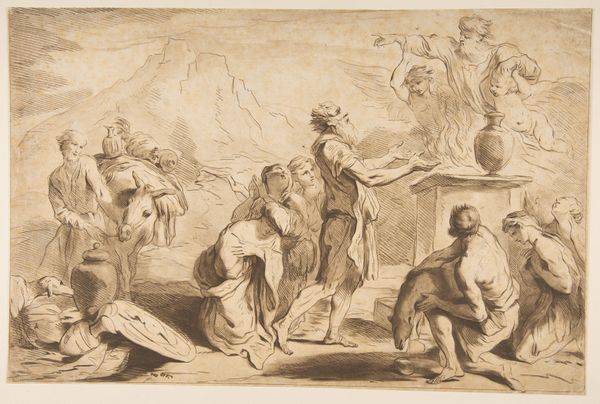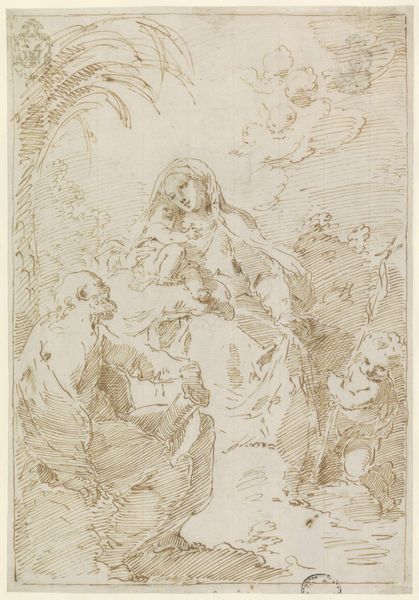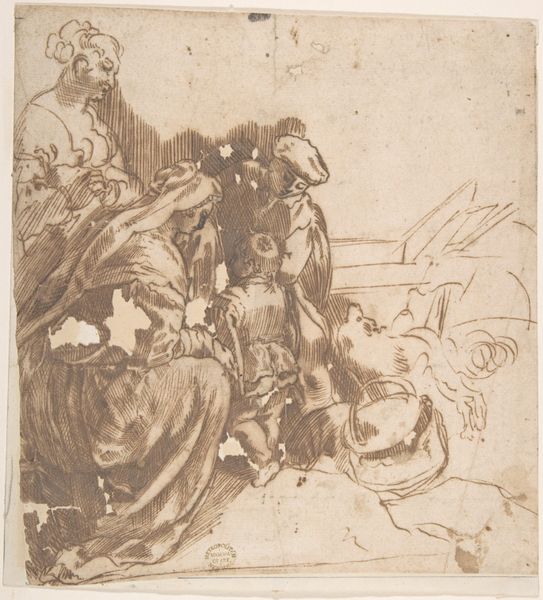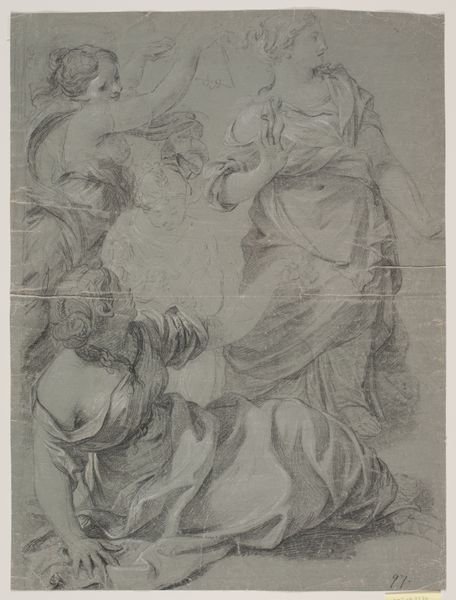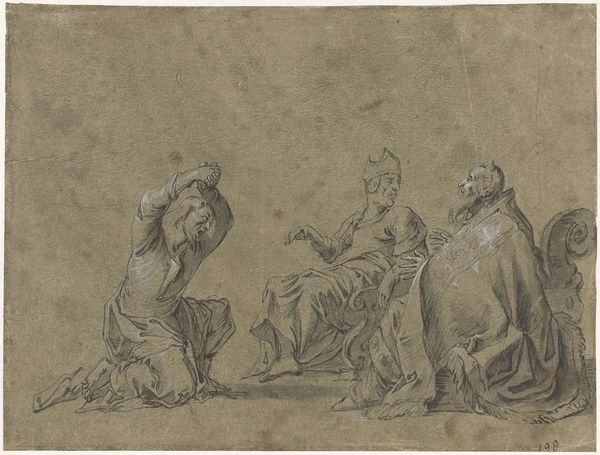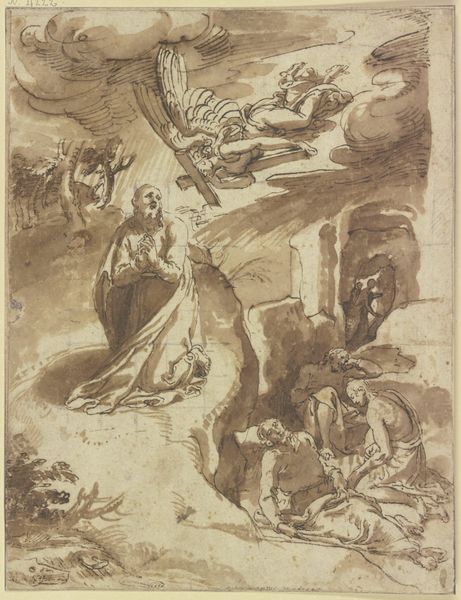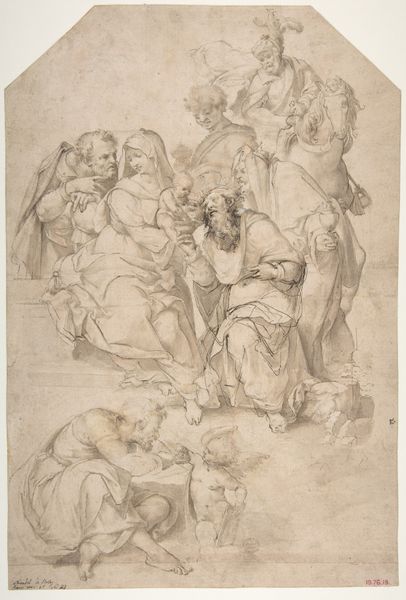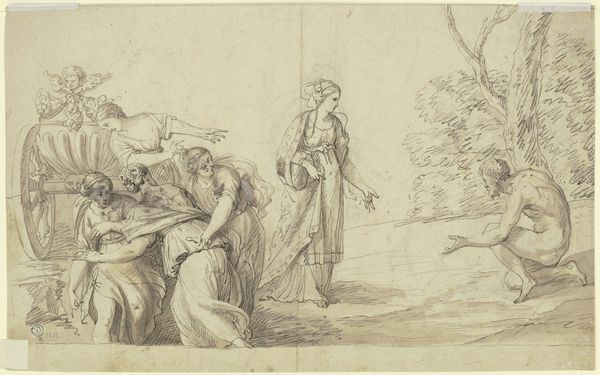
drawing, gouache, paper, ink, chalk
#
drawing
#
allegory
#
baroque
#
gouache
#
figuration
#
paper
#
ink
#
chalk
#
history-painting
Dimensions: 401 × 288 mm
Copyright: Public Domain
Editor: Giovanni Battista Pittoni's "Epitaph of Charles Sackville," created with ink, chalk, and gouache on paper, feels theatrical. I'm struck by how the figures are arranged – it's like a stage. How do you interpret the way Pittoni uses this dramatic composition to convey meaning? Curator: It's essential to see this not just as an isolated artwork, but as a product of its social moment. Pittoni worked in Venice, a city where public spectacle was central to its political power. Representations of nobility and authority were often performative. He may never have expected this drawing to be shown publicly. Still, its composition relies on shared understandings of how power should be visualized, using allegory to reinforce Sackville's virtues and status. Editor: So, even a private drawing could reflect the conventions of public imagery? The figures and gestures definitely read as deliberate, almost posed. Curator: Exactly. Notice how the figure of Father Time points upwards, perhaps toward an allegorical figure, guiding our gaze and framing Sackville within a narrative of lasting legacy. Consider too how museums, patrons, and even art historians have contributed to the visual vocabulary associated with authority and mourning during this period. To whom was Sackville an important figure, and what messages are the commissioner, or the artist, trying to evoke in them? Editor: That’s a good point. The role of patronage and audience shapes our understanding so much. It encourages me to look beyond immediate aesthetic appreciation to how these images function culturally. Curator: Precisely. Looking at it this way allows us to think more critically about the values and power structures embedded within the art itself. Editor: Thank you. Now I see how deeply entwined history is with an artwork’s purpose, intended or not.
Comments
No comments
Be the first to comment and join the conversation on the ultimate creative platform.
